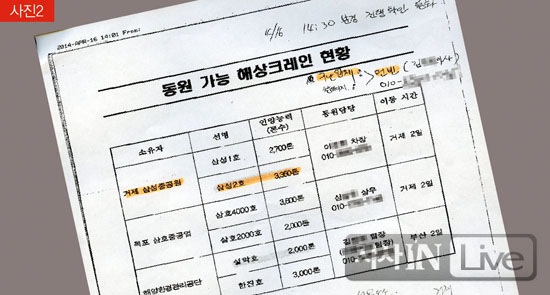공지사항
-
- 디지털 시대의 디지털 액티비티
- 뎡야핑

![]()
머리띠 (투쟁!)
ㄱ
가이 포크스
간디
ㄷ
다스 베이더 https://www.google.co.kr/search?newwindow=1&biw=1746&bih=905&tbm=isch&q=darth%20vader%20vector&revid=112156160&ei=ebmeU5DPH4nn8AWEmIHoDA&ved=0CCEQsyU
ㄹ
레닌
ㅁ
마르크스
ㅂ
반핵
ㅅ
사파티스타
섀우깡
ㅇ
아옌데
엥겔스
ㅊ
체게바라
ㅍ
피노키오
08:48 AM
세월호, 급변침
08:55 AM
“지금 배 넘어갑니다” 세월호, 제주 VTS와 교신
주체: 해수부, 중앙대책본부, 청와대
09:07 AM
세월호, 진도 VTS와 교신
진도 VTS는 다른 경로를 통해 세월호의 긴급상황을 인지하고 세월호와 교신을 시도해 9시 7분에 처음으로 교신한다.
09:10 AM
세월호, 문자로 국정원에 사고 보고
세월호 운항관리규정상 ‘해양사고 보고 계통도’에 따르면 사고 시 세월호는 국정원에 1차적으로 보고해야 한다. 실제로 청해진해운은 사고 초반인 9시 10분에 국정원에 문자메시지로 사고 소식을 알렸으나, 국정원은 국회 답변에서 9시 44분에 언론을 통해 사고 소식을 접했다며 거짓말로 일관했다.
4월 운항중이던 1천톤급 이상의 17개 여객선 중 해양사고 발생시 국정원에 보고하는 체계를 갖춘 여객선은 세월호가 유일하다.

주체: 국정원
09:32 AM
해경 123 함정 도착, 처음으로 구조 시작
첫번째로 도착한 해경인 123정은 해경본청에 경비전화로 “갑판과 바다에 사람이 하나도 없다”고 보고했으나 해경은 즉각적인 선실진입과 승객퇴선 지시를 내리지 않았다.
해경은 '해양 수색구조 매뉴얼'을 제대로 지키지 않으며 골든 타임을 허비했고, 이는 매뉴얼만 지켰어도 구조됐을 이들까지 죽음으로 몰아갔다. (<--- 너무 표현이 센가?? =ㅅ=)
주체: 해경
12:44
해군3함대 잠수사 5명 현장 도착
전남도청 119 상황실로부터 지원요청을 받은 해군은 9시 9분에 함문식함 등 소속함정을 출동시켜 비교적 일찍 현장에 도착했으나 해경은 이들을 활용하지 않았다. 개정된 수난구호법에 따르면 해경이 요청하지 않는 한 해군이나 민간은 구조에 나설수 없다.
주체: 해경
15:00경
해경본청, 청해진해운에 언딘과 구난 계약 체결 종용
수색·구조작업이 한창 진행되고 있어 선박 인양이 이른 시점임에도 해경은 청해진해운에 구난계약 체결을 종용하며 직원이 3차례 통화하기도 했다.
청해진 해운에 따르면 담당 해경이 ‘제 입으로 말하기는 그렇지만 언딘이라는 업체가 있는데 벌써 구난 작업을 하고 있다. 그쪽과 계약하라’고 해서 사전에 존재도 몰랐던 언딘과 계약했다고 한다.
*** 언딘-해양구조협회 등은 규만이 써주삼
수난구호법은 수색구조·구난에 관한 기술·제도·문화 등의 연구·개발·홍보 및 교육훈련, 행정기관이 위탁하는 업무의 수행과 해양 구조·구난 업계의 건전한 발전 및 해양 구조·구난 관계 종사자의 기술향상을 위해 한국해양구조협회를 둔다. 수난예방과 대응에 대한 광범위한 업무를 민간에 위탁해 둔 양상. 해양구조협회의 인적구성을 보면 협회의 실제적인 기능은 정치권, 해경, 해양수산부, 해운업계의 이해관계자들의 인적 네트워크로 보임.

주체: 해경, 한국해양구조협회, 언딘
19:50
해경, 급파된 인양선 씨뮤즈호 방치
문화재청 소속 수중발굴 인양선 씨뮤즈호가 세월호 침몰 현장에 도착(또다른 인양선 누리안호는 다음날 오전 8시 10분 도착)했지만 해양경찰이 수일간 방치하다 돌려보냈다. 해경은 심지어 인양선들 철수 후 문화재청에 재지원을 요청하며 6일이나 시간을 낭비했다.
주체: 해양경찰
**
민간 잠수사 배제한 거 어떻게 넣어야 할지 모르겠긔... ㅠㅠ
http://news.jtbc.joins.com/article/article.aspx?news_id=NB10496586
최근 댓글 목록